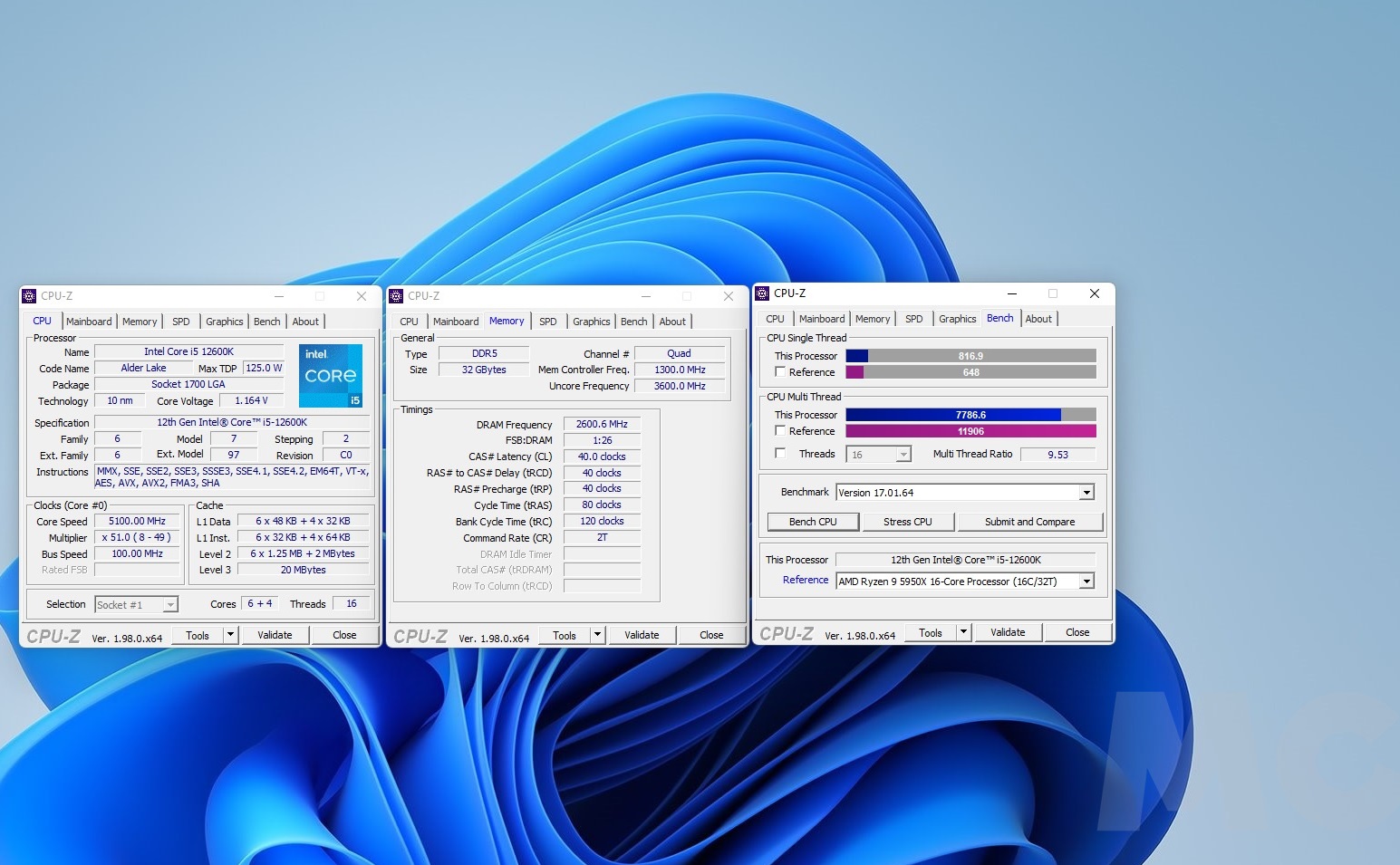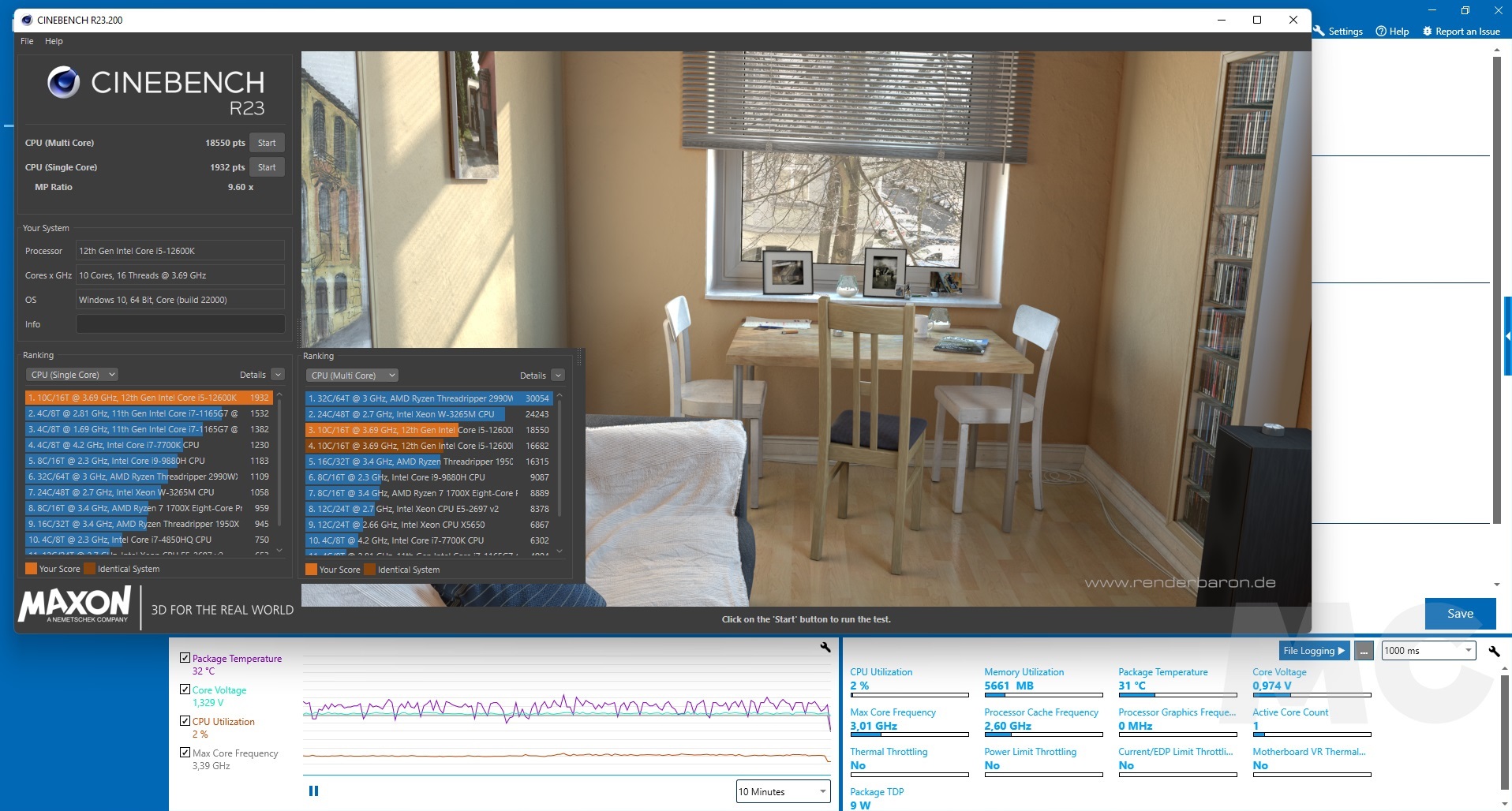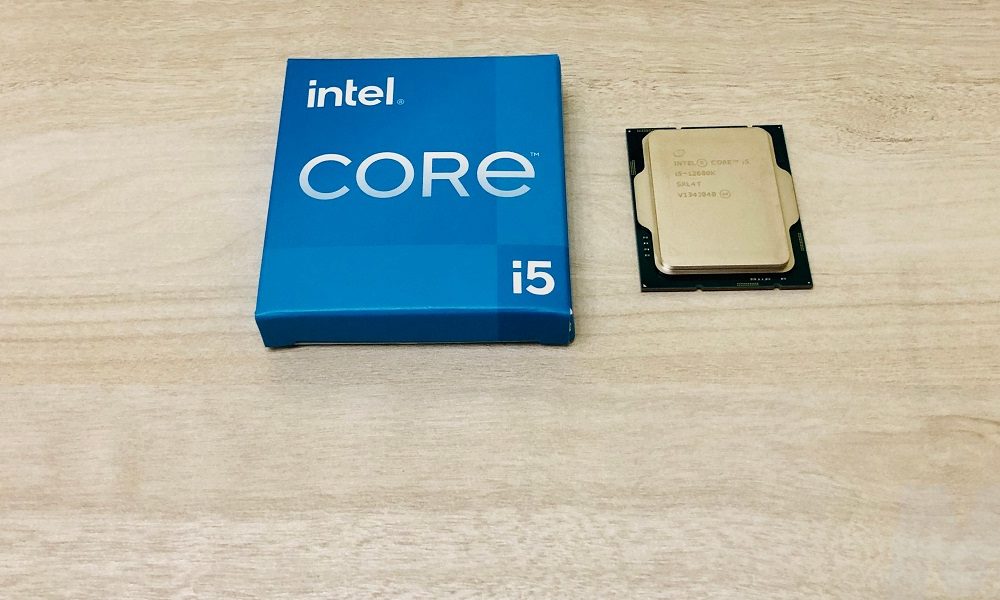
With the launch of the Intel Core i5-12600K, the chip giant has delivered a major coup of authority in the mid-range “premium” sector, a very crowded and very competitive level, where AMD had managed to take the crown of performance thanks to to the Ryzen 5 5600X, a processor that hit the market with a very high price, since it cost, at its launch, 349 euros.
In terms of raw performance, the Ryzen 5 5600X was superior to the Intel Core i5-11600K, but the difference between the two was not too great, and this made the price of the first one not at all justified , a reality that led to criticism. perfectly reasoned that, in the end, led AMD to place it in the range of 300 euros. It was a very curious situation, since AMD had the crown of performance, but Intel became the best price-performance option.
The Intel Core i5-12600K is emerging as a processor that not only seeks to maintain that good price-performance value that we saw in the previous generation, but also aspires to recover the crown of performance against the Ryzen 5 5600X , and the truth is that after seeing its specifications it was quite clear that he was going to get it. That hunch grew even stronger when I finished my review of the Intel Core i9 12900K, where I was able to confirm that the Golden Cove architecture represents a breakthrough in terms of IPC, and that the high-efficiency cores have been a step in the right direction on the part. from Intel.
Like its older brother, the Intel Core i5-12600K adopts a hybrid core configuration , which means that it combines a high-performance core block with another high-efficiency core block. Its silicon-level footprint is identical to that of the Intel Core i9-12900K, but it obviously has some elements disabled to adjust to a lower setting and in line with the range it is targeting. We will talk about it later, when we see its specifications and compare it to the Intel Core i5-11600K.
Intel Core i5-12600K vs Intel Core i5-11600K: Very Deep Changes
When we say that Alder Lake-S represents one of the greatest advances in the high-performance x86 processor sector in recent years, it may seem that we are exaggerating, but nothing is further from the truth. Intel has introduced very profound changes in this new generation of processors that justify, more than enough, that valuation, since they go beyond raw power, and open the doors to a new era in specialized computing at the CPU level.
The Intel Core i5-12600K adopts all the values of the Alder Lake-S series, which means that it has two blocks of cores, a high-performance one composed of a total of six Golden Cove cores , and a high-efficiency one integrated by quad core Gracemon t. This leaves us a total of 10 cores , but thanks to the HyperThreading, present in the high-performance cores, the Intel Core i5-12600K can work with 16 threads . As I have explained before, each high-performance core can handle two threads simultaneously.
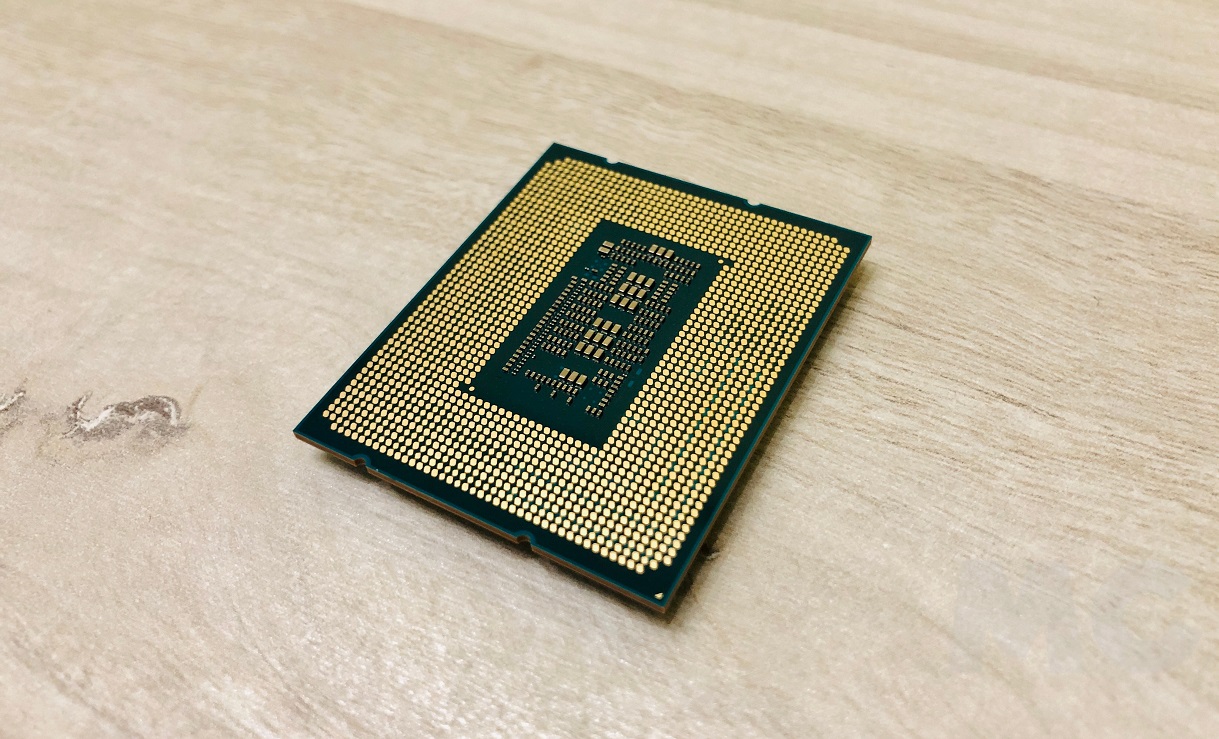
I always like to better explain the subject of HyperThreading and the value of being able to handle two threads per core, and this time I am not going to make an exception. Imagine you have four bags to move from point A to point B . If you carry a bag in each hand, you will have to make two trips, that is, two complete round-trip cycles will be necessary. Well, if each hand were a core, and each bag a thread, by activating HyperThreading you could carry two bags in each hand, which would allow you to carry all four bags in a single cycle . Simple, but surely you have understood.
This hybrid design is noticeable in the external appearance of the Intel Core i5-12600K, which maintains the rectangular IHS that we saw in the Intel Core i9-12900K , and which confirms that the internal distribution, at the silicon level, is identical, although with the particularities that we will see later. Before continuing, let’s see the differences between the Intel Core i5-12600K and the Intel Core i5-11600K with a direct comparison.
Intel Core i5-11600K
- Cypress Cove architecture in 14 nm +++ process.
- Six cores and twelve threads at 3.9 GHz-4.9 GHz, normal and turbo mode.
- GPU Intel UHD Graphics 750 (Xe Gen12).
- Unlocked multiplier (supports overclocking).
- 12MB L3 cache.
- 125 watt TDP (PL1).
- Compatible with LGA 1200 socket and H470 and Z490 chipset, and with 500 series.
Intel Core i5-12600K
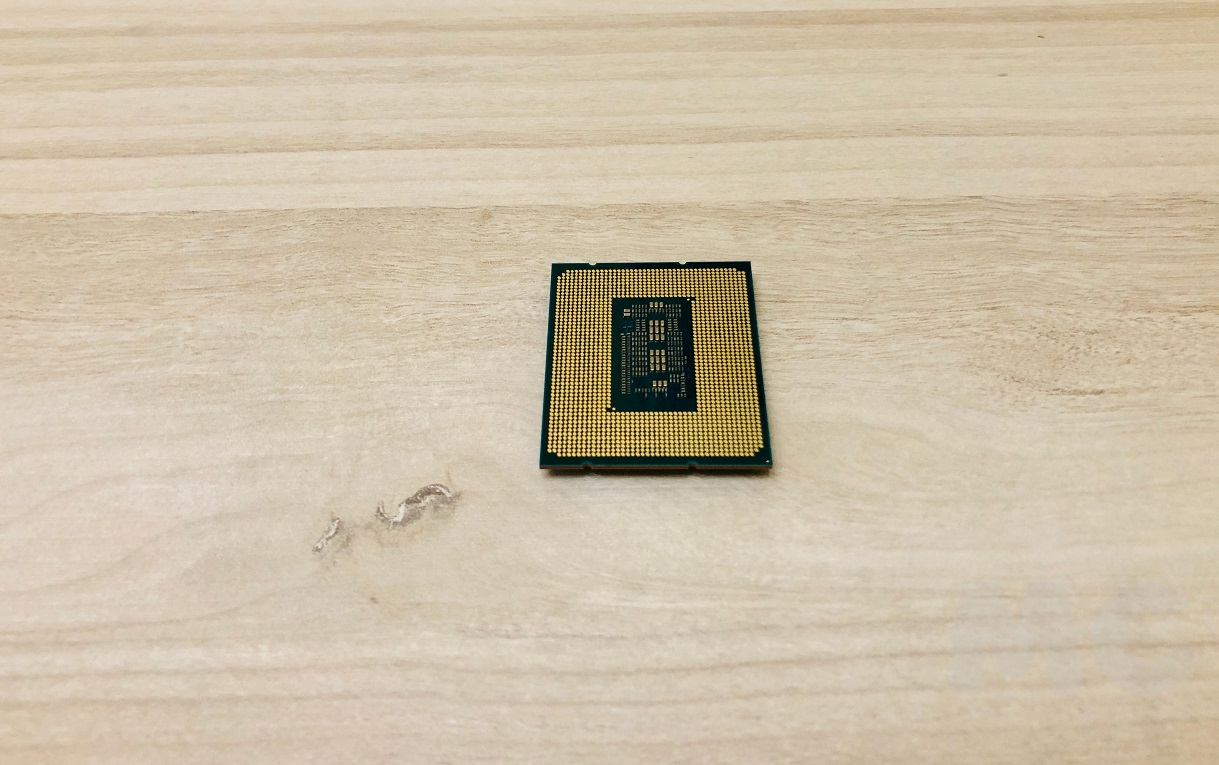
- Golden Cove architecture on high-performance cores, and Gracemont on high-efficiency cores.
- Manufactured on Intel Node 7 (10nm SuperFin).
- Six high-performance cores and twelve threads at 3.7 GHz-49 GHz, normal and turbo mode, and four high-efficiency cores at 2.8 GHz-3.6 GHz, normal and turbo mode.
- GPU Intel UHD Graphics 770 (Xe Gen12).
- Supports DDR4 and DDR5 memory.
- It integrates a PCIE Gen5 system with up to 16 lanes, and PCIE Gen4 with up to 4 lanes.
- Unlocked multiplier (supports overclocking).
- 20MB L3 cache.
- 9.5 MB of hidden L2.
- 125 watt base power.
- Compatible with LGA 1700 socket and 600 series chipset.
- Price: 310.30 euros.
As we can see, the evolution that marks the Intel Core i5-12600K compared to the Intel Core i5-11600K is enormous. The first introduces a totally new design that combines two different types of cores, and that represents a clear commitment to specialization, uses a more advanced manufacturing process , supports DDR5 and PCIE Gen5, is integrated into a much more advanced platform and not only It offers higher performance in single-wire, thanks to its higher IPC (up to 19% more), but also performs more in multi-wire.
If we compare it with the Ryzen 5 5600X, the differences are also very marked. The Intel Core i5-12600K has 10 cores and 16 threads, compared to the 6 cores and 12 threads of the Ryzen, integrates on a next-generation platform, supports the latest industry standards and can better parallelize different workloads. Its price is also very competitive , since the AMD chip is around 299 euros.
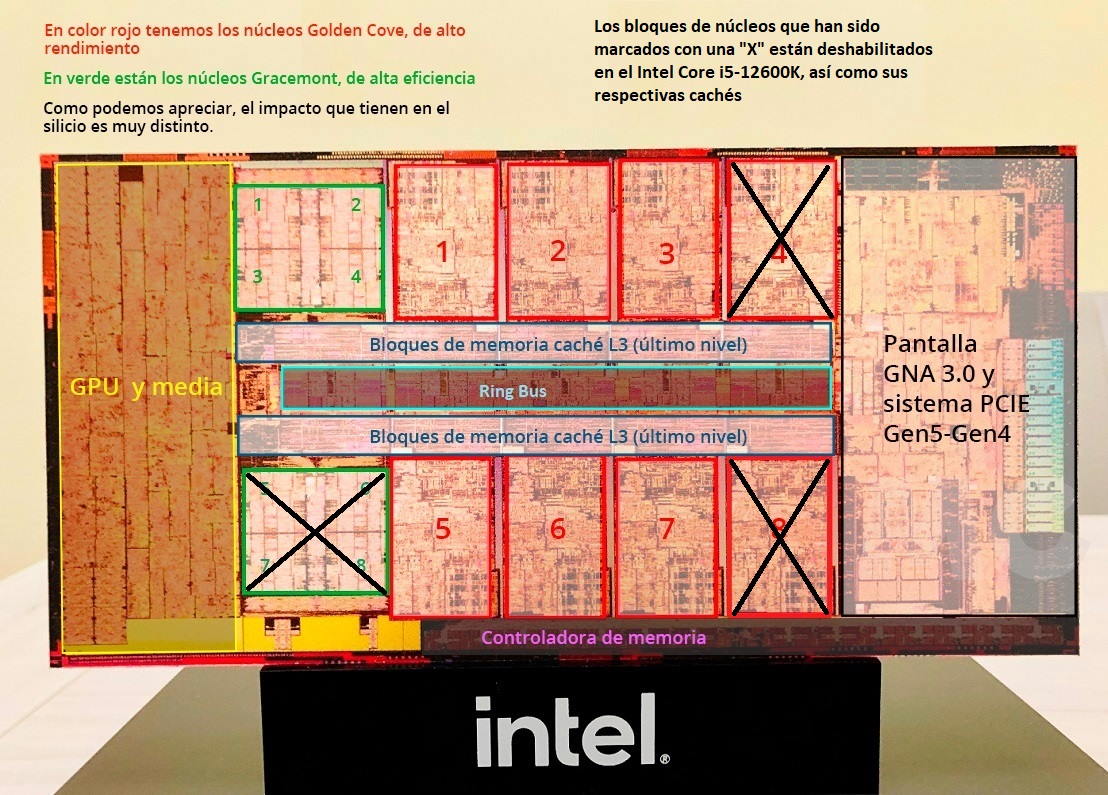
In the attached image we can see how the Intel Core i5-12600K would be configured, at the silicon level . We have two high-performance cores disabled, and a block of four high-performance cores that has also been disabled, which leaves us with that 6 + 4 configuration that we have indicated. On the other hand, this also allows us to understand the reduction of L3 and L2 caches . The Intel Core i5-12600K has 20 MB of L3 cache, 10 MB less than the Intel Core i9-12900K, and 9.5 MB of L2 cache (7.5 MB of the six high-performance cores and 2 MB of the four high efficiency cores).
Intel Core i5-12600K Spotlight: A Technical Look
As we have commented in the previous section, the Intel Core i5-12600K maintains the base of the Intel Core i9-12900K , and this means that it maintains the monolithic core design , and that it incorporates all the improvements that we saw at the time when we analyzed said CPU, both at the level of microarchitecture and multimedia and interconnection system. Thus, this chip has:
- Six Golden Cove cores and four Gracemont cores.
- 3200 MHz-4800 MHz dual channel DDR4-DDR5 memory controller. We can exceed those values thanks to overclocking.
- PCIE Gen5 interface with 16 lanes and PCI Gen4 with 4 lanes.
- Next-generation Intel Xe Gen12 integrated GPU with 32 execution units, supporting DirectX 12, OpenGL 4.5 and OpenCL 2.1. Compatible with eDP 1.4b, DP 1.4a and HDMI 2.1 connectors, supports up to four displays, offers resolution of up to 7,680 x 4,320 pixels at 60 Hz, and has AV1 and HEVC codec acceleration.
- Each high-performance core can handle two threads, thanks to HyperThreading.
- High-performance cores improve IPC by up to 19% over the previous generation (Rocket Lake-S). Up to 28% vs. Comet Lake-S.
- High-efficiency cores offer single-threaded performance similar to Intel’s Skylake architecture.
- The high-performance cores are compatible with Intel AMX technology, support FP16, AVX512 and use a new Compute Fabric interconnect system with optimized latency reaching 1,000 GB / s.
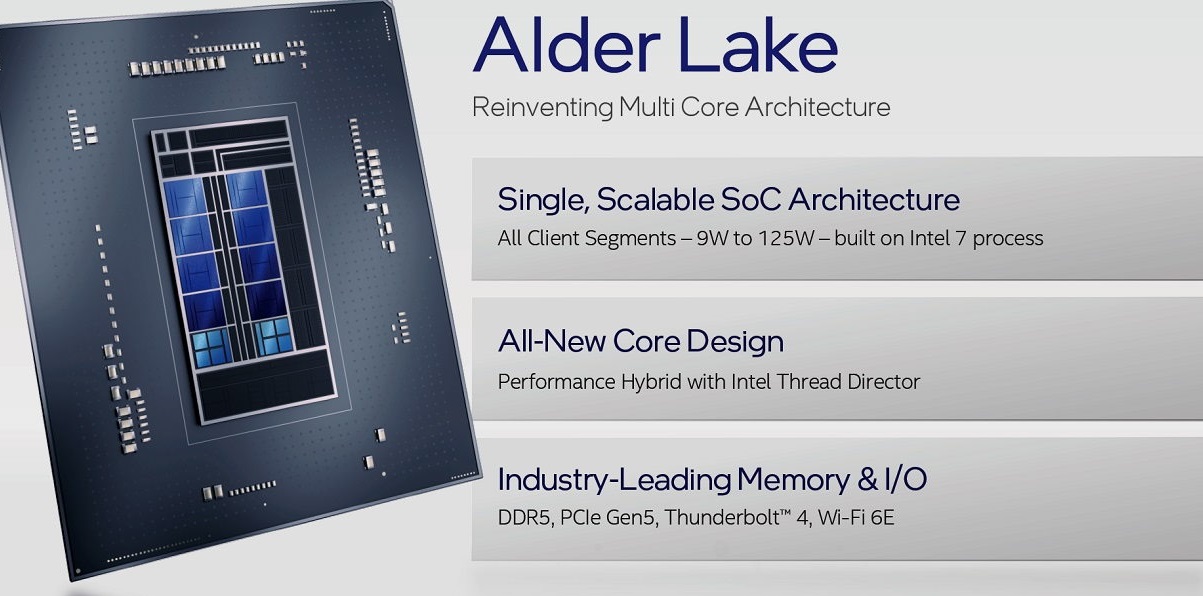
To achieve correct management of high-performance cores and high-efficiency cores, we have the Intel Thread Director, which operates both at the hardware and hardware level to help the operating system decide, at any time, which core or Cores must deal with a specific task , and also to decide how the distribution of the workload should be altered according to the new tasks that are executed.
Intel Thread Director is capable of handling a work thread in as little as 30 microseconds, which means that it not only works with great precision, but also works at high speed. To get to that level, it monitors what exactly each process and thread is doing, and uses metrics for performance, consumption, temperature, memory access times, and more to determine the true importance of each thread. This also serves to assess whether it is better to move certain threads from high-performance cores to high-efficiency cores, either for a simple power issue or for thermal or consumption reasons.
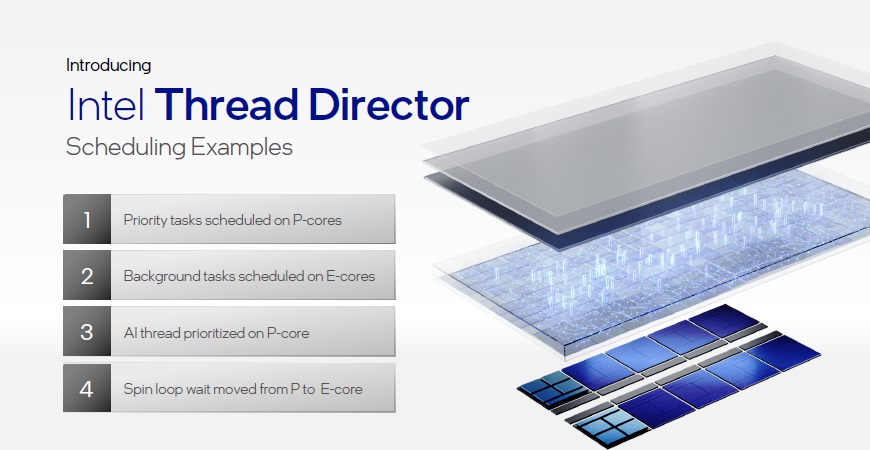
The system will prioritize high-performance cores, but in those scenarios where power consumption is severely limited, you can start with a high-efficiency core. In the end, the important thing, and what we have to make clear, is that Intel Thread Director acts as a kind of conductor to make the high-performance cores, and the high-efficiency cores, work not only in perfect harmony, but also in a way that is perfectly adjusted to the reality of each task, and in real time.
Its importance is beyond any doubt , you just have to think about the problems we would have if demanding tasks were assigned to high-efficiency cores, and undemanding tasks to high-performance cores. We would have an incorrect distribution of tasks that would not only negatively affect performance, but also reduce efficiency and shoot, without sense, consumption and temperatures.
High Performance Cores and High Efficiency Cores: An In-depth Look
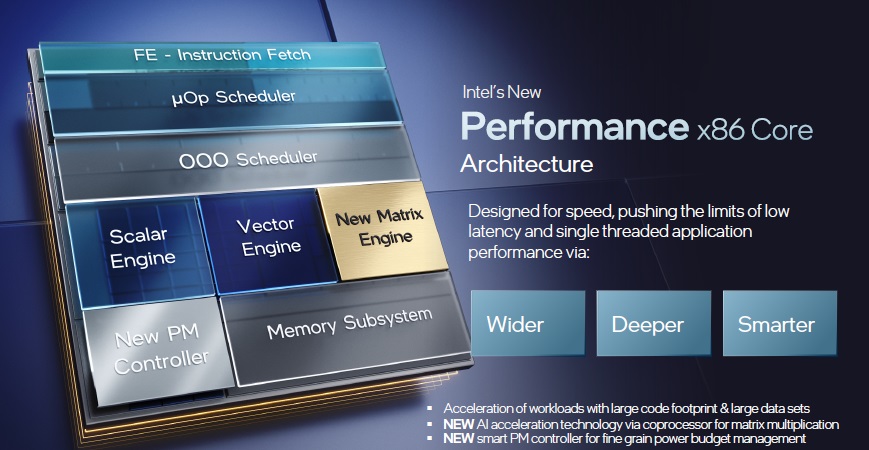
The high-performance cores are based, as we anticipate, on the Golden Cove architecture. The Intel Core i5-12600K has a total of six cores of this type that, as we saw, improve the IPC by up to 19% compared to Cypress Cove, an architecture used in Intel’s Rocket Lake-S processors (11th generation Core ). They take care of the tasks that are in the foreground, and those that are more demanding.
- Front end improvements and a more accurate and intelligent jump predictor.
- Deeper, broader and smarter out-of-order execution.
- Improvements in integer execution units, and in vector execution units.
- FP16 (Medium Accuracy) has been added to Intel AVX-512.
- Larger caches with better latencies.
- New Compute Fabric interconnect system with optimized latency reaching 1,000 GB / s.
- Intel AMX technology support.
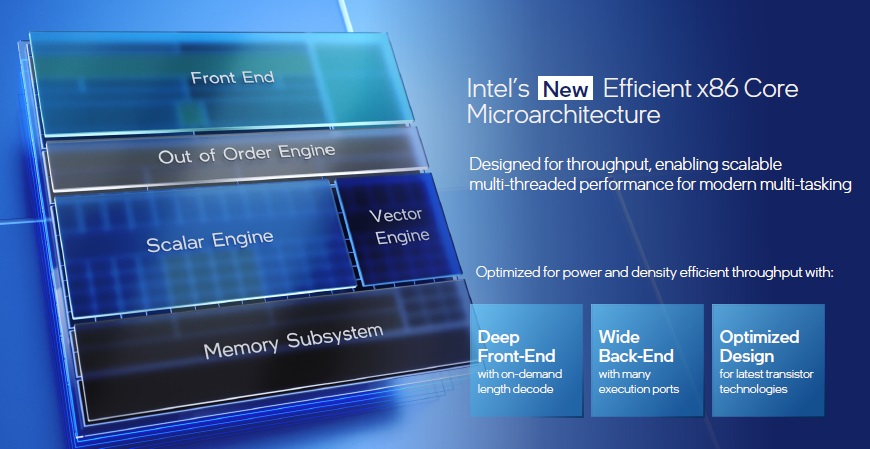
For their part, the high-efficiency cores based on Gracemont also represent an important leap compared to the previous generation, known as Tremont , to such an extent that, as we anticipated, they have managed to position, in terms of CPI, at a very similar level compared with Skylake. They take care of the tasks that are in the background, and those that are less demanding. These are the main improvements Intel has made to Gracemont:
- Larger cache for instructions (64 KB).
- More accurate jump predictor.
- New out-of-order decoding system, capable of working with up to 6 instructions per clock cycle.
- Data execution improvements and 4 integer execution units.
- AVX2 (256-bit) support.
- Enhanced memory subsystem, with up to 2MB of L2 cache for every four cores, a deeper buffer, and advanced cache prefetch.
- Reduced latencies at the cache level to reduce access times.
- A more advanced and comprehensive set of instructions, including speculative advanced execution, Wide Vector, and FMA.
High-performance cores and high-efficiency cores have different IPC, and they also work at different frequencies . Thanks to turbo mode, high-performance cores can reach 4.9 GHz with an active core, while high-efficiency cores can reach 3.6 GHz.
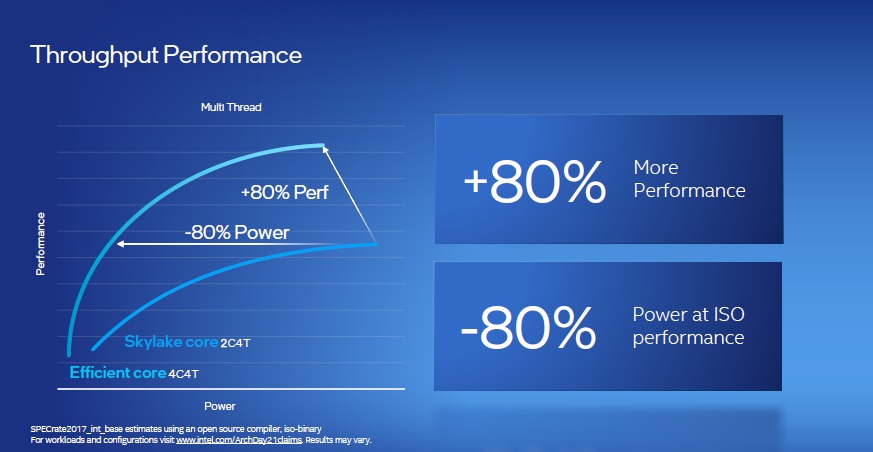
When the turbo mode is activated, the TDP assumes a value of 150 watts, and can be maintained at that level indefinitely. It is important to remember that the turbo mode scales dynamically, and automatically, depending on the workload, temperature and the specific situation of the system at each moment, thanks to Intel Turbo Boost Technology 2.0. The Intel Core i5-12600K is not supported, unlike the Intel Core i9-12900K, with Intel Turbo Boost Max 3.0 technology, which means that its turbo mode is less advanced, and that it offers a lower peak single-thread performance in terms working frequency.
And why combine high-performance cores with high-efficiency cores? We have already seen the reasons in previous articles, and I returned to this topic in the review of the Intel Core i9-12900K. With Alder Lake-S, Intel has maintained a monolithic core design , which means that to increase multithreaded performance it had to find a reasonable solution at the wafer level (success rate) and encapsulation (silicon level space) , without forgetting thermal issues and consumption.
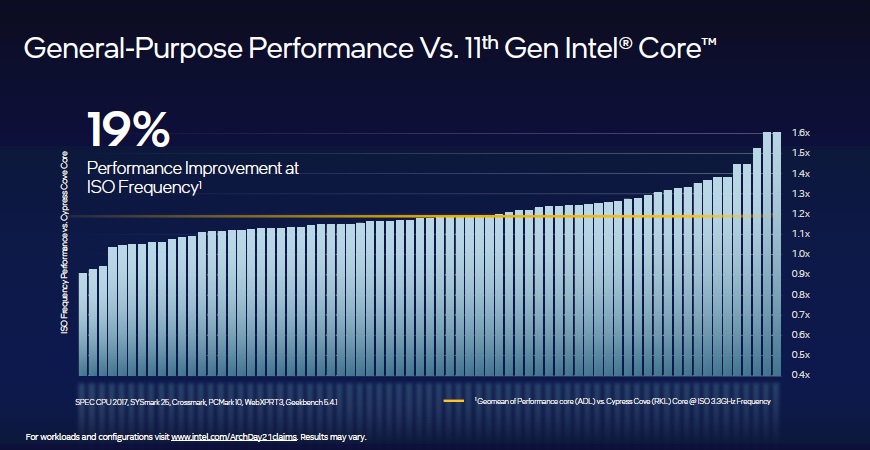
The high-efficiency cores were the smartest solution, in every way, that Intel found to cover all these keys, and the end result that the chip giant has achieved with this duality of cores has been fantastic, so much so that, as we will see In this review, the Intel Core i5-12600K is capable of even competing with the Ryzen 7 5800X, a more expensive processor that has an 8-core and 16-thread configuration.
We must forget about the conception of high-efficiency cores as something in a pejorative sense. They are not low-performance cores at all, they are cores that have a lower IPC compared to the Golden Cove architecture, but are more or less at the level of the Skylake architecture, which means that they are capable of offering good performance with a consumption and a very low thermal value. Its impact is also minimal at the silicon level, since a high-efficiency core takes up about a quarter of the space of a high-performance core.
Intel Core i5-12600K and Z690 chipset: An up-to-date platform
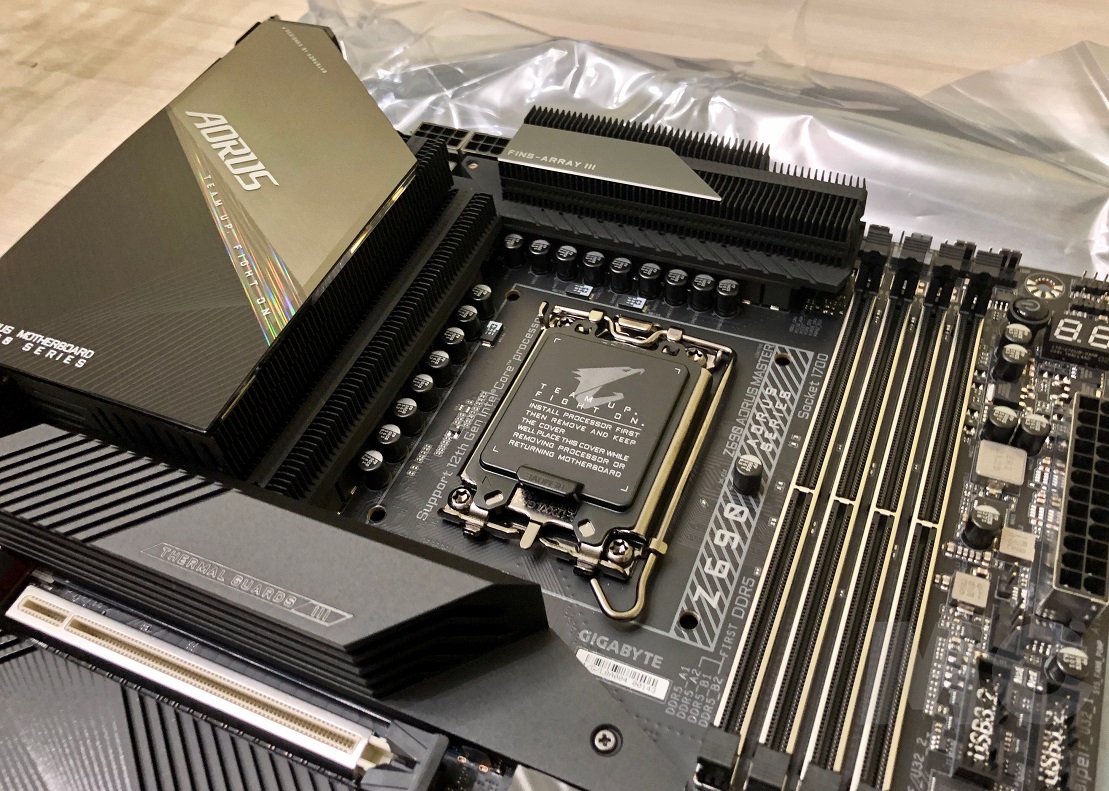
With the launch of Intel Alder Lake-S, the chip giant wanted to give priority to its flagship chipset, the Z690, a solution that will be used in mid-range, high-end and enthusiast-end motherboards, and that not only integrates a full range of features, but also supports the most advanced standards in the industry, and enables the “K” and “KF” series processors to develop their full overclocking potential.
Both the DDR4-DDR5 memory controller and the 16-lane PCIE Gen5 subsystem are built into the Intel Core i5-12600K , so a motherboard with a Z690 chipset offers support for the PCIE Gen4 standard , with a maximum of 12 lanes . This means that we can mount, without problem, four PCIE Gen4 x4 SSD units. I know it may seem like a lot, but for advanced users, and for those of us who need to have a lot of games installed on a test machine, it ends up being important.
The Z690 chipset also offers up to 16 PCIE Gen3 lanes, is compatible with Intel Optane, Intel VMD, Rapid Storage Technology and Intel PTT , the latter technology that allows us to meet the requirement of a TPM 2.0 chip when upgrading to Windows 11. You can include an Intel Killer Wi-Fi 6-6E networking solution, it is compatible with the Intel Extreme Tuning Utility overclocking tool, as well as Intel Smart Sound and High Definition Audio technologies.
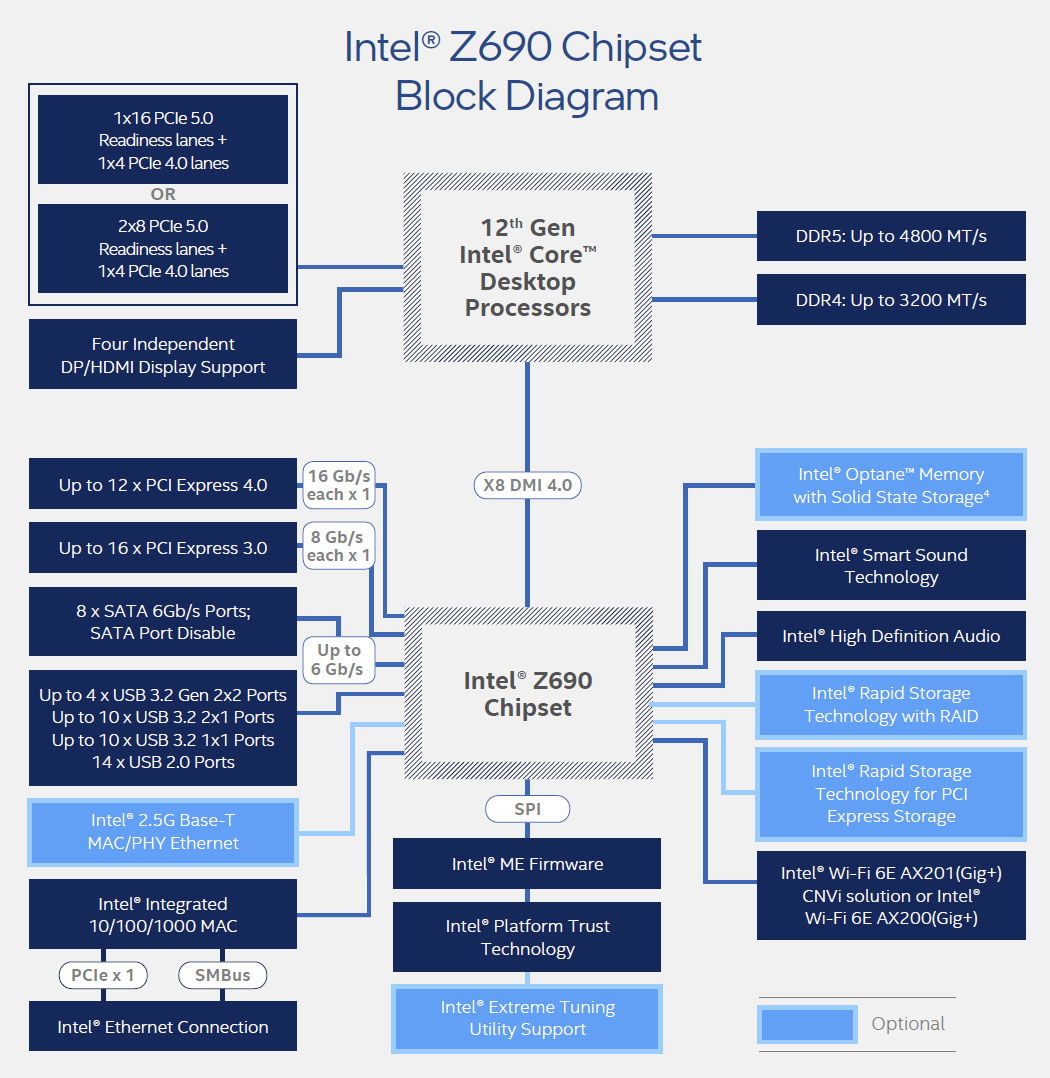
As we can see in the attached diagram, this chipset also supports up to 8 SATA III connectors , supports up to four USB 3.2 ports at 20 Gbps; ten 10Gbps USB 3.2 ports; ten USB 3.1 5 Gbps ports and up to fourteen USB 2.0 ports, it is compatible with the Thunderbolt 4 standard and supports up to two 2.5 GbE and 1 GbE Ethernet MACs.
The Intel Core i5-12600K uses the LGA 1700 socket , so in order to use it we need a new motherboard that is compatible with that socket. The retention systems of the LGA 1200 socket cooling systems are compatible with the LGA 1700 socket, but we will need some new riser screws, so keep that in mind. Most of the big players in the industry offer upgrade packs with these riser screws at a very low price.
We can use Intel Alder Lake-S processors with DDR4 and DDR5 memory, but we must bear in mind that for this we must buy a compatible motherboard. In this review we have used the Gigabyte Aorus Master Z690, the same board that we used in the review of the Intel Core i9-12900K. This board supports up to 128GB of DDR5 memory, so it does not support DDR4 memory.
I don’t want to end this section without talking about overclocking again, as Intel has gone to great lengths to improve this feature in Alder Lake-S, and the Intel Core i5-12600K comes with the multiplier unlocked, which means that it supports overclocking without issue. .
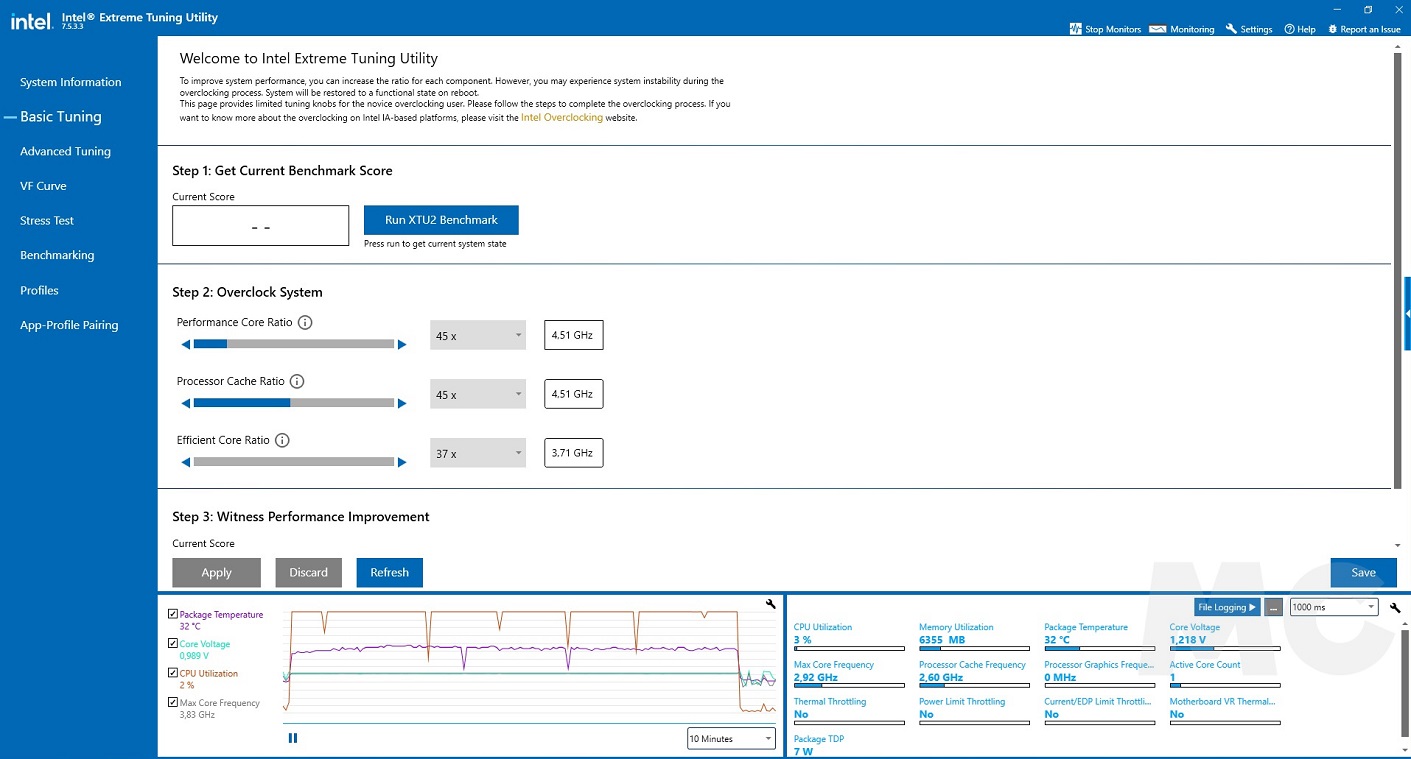
As we already told you at the time, through the Intel Extreme Tuning Utility application we can access different settings that will allow us to increase the working frequencies of the processor, tune the voltages, deactivate cores, control HyperThreading on a per core basis and do independently overclock the high-performance and low-power cores. Very complete, very versatile and also very useful for monitoring the status of the system. We can also carry out other settings, such as disabling the AVX instructions.
Memory overclocking has improved with the introduction of Intel XMP 3.0 profiles , which allow us to activate, with a simple click, the highest performance profile available. In the case of the memories that we have used in this analysis, the Kingston Fury Beast, when we installed them on the motherboard, worked at 4,800 MHz, but one click was enough to choose the profile that raised the frequencies to 5,200 MHz. Everything worked at perfection, and stability was total from the first minute.
By default, the Intel Core i5-12600K has a base power mode of 125 watts running at its reference frequencies, but it can go up to 150 watts when turbo mode is activated. This value is clearly lower than the 241 watts of the Intel Core i9-12900K, and it means that we are facing a cooler and more efficient chip, although obviously it is also less powerful, since it has fewer cores and threads, and reaches a lower frequency peak with all nuclei active.
As expected, the Intel Core i5-12600K also brings the same changes at the packaging level that we saw in the Intel Core i9-12900K, which means that the thickness of that has been reduced to increase the size of the IHS. This helps to speed up the dissipation of heat, since silicon has a larger surface area on which to distribute it.

Test rig to analyze the Intel Core i5-12600K
We have used exactly the same configuration that we saw in the review of the Intel Core i9-12900K, so that you can directly compare both processors, and so that you can better appreciate the difference between them.
For the avoidance of doubt, I am attaching a complete summary with all the components:
- Windows 11 as an operating system.
- Procesador Intel Core i5-12600K.
- Placa base Gigabyte Aorus Master Z690.
- RAM Kingston Fury Beast, DDR5 at 5,200 MHz with CL40 latencies in two 16 GB modules (32 GB in total).
- SATA III Crucial SSD of 480 GB.
- SSD PCIE Gen4 x4 WD Black SN850 de 2 TB.
- GeForce RTX 3080 Ti graphics card with 12GB of GDDR6X memory.
- Corsair iCUE H150i Elite LCD liquid cooling system.
- Corsair RM1000x 80 Plus Gold Certified 1,000 Watt Power Supply.
Intel Core i5-12600K Performance: Synthetic Tests
As we can see from the CPU-Z benchmark, the Intel Core i5-12600K has a very high IPC. It is not a secret, we already anticipated it at the time, although due to its turbo mode, which works at a lower level compared to that of the Intel Core i9-12900K, it does not manage to reach 800 points in single wire. All in all, it goes without saying that it is a fantastic result for a processor of just over 300 euros. You can enlarge all the images by clicking on them.
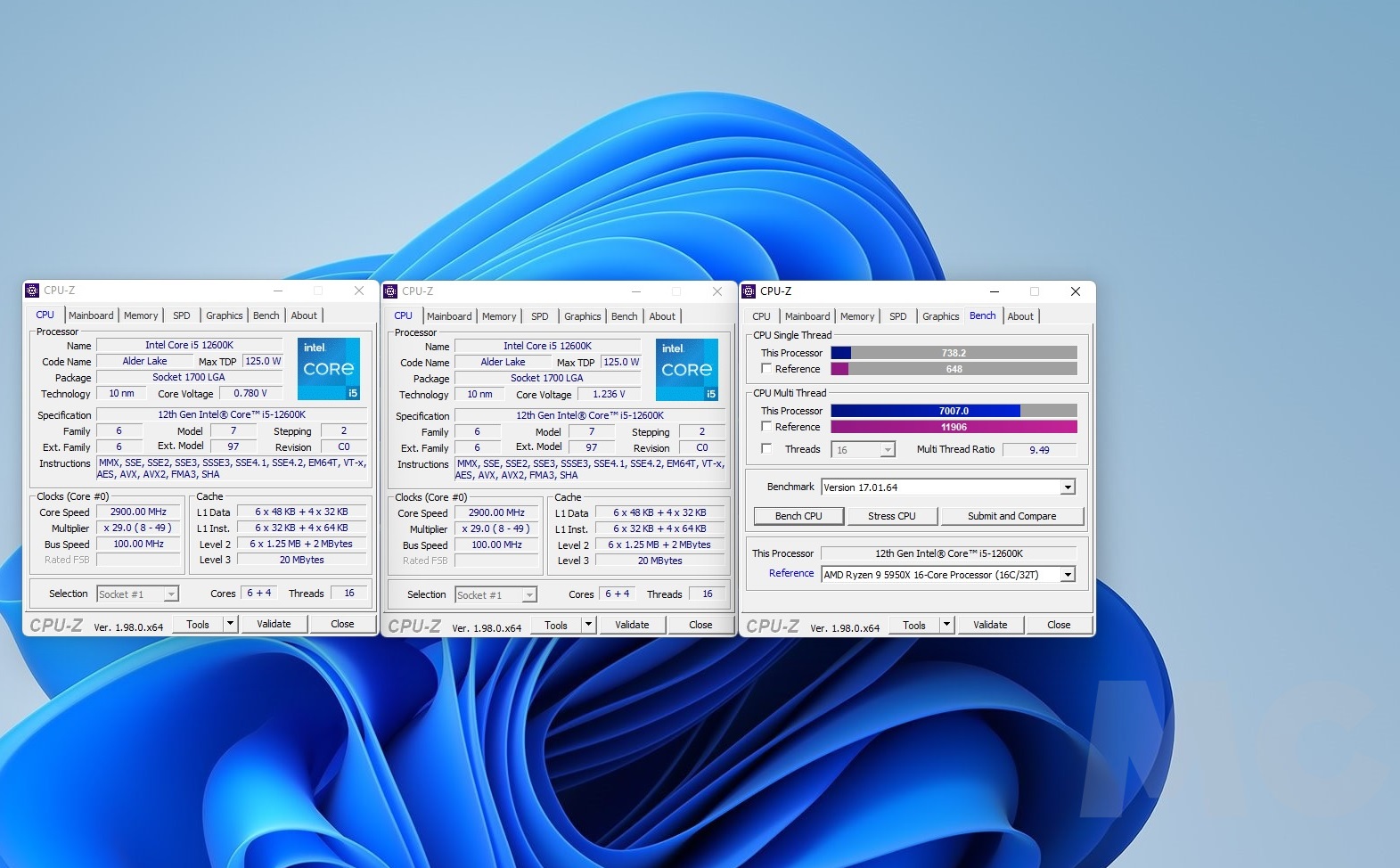
We now jump to see the results it has obtained in Cinebench R23, and it is confirmed again that the Intel Core i5-12600K not only surpasses all its direct rivals in single-wire, but also prevails over other more expensive chips, even in multi-wire . To better illustrate that reality, I leave you the results that my Ryzen 7 5800X obtained in that test , and yes, the Intel Core i5-12600K is superior even in multithreading.
Intel Core i5-12600K performance on CB 23.
Ryzen 7 5800X performance on CB 23.
Now we go to PassMark, a benchmark that allows us to get an idea of how the Intel Core i5-12600K performs under a broad compendium of combined CPU tests . The result is very good, although as expected it is a considerable distance from the Intel Core i9-12900K.
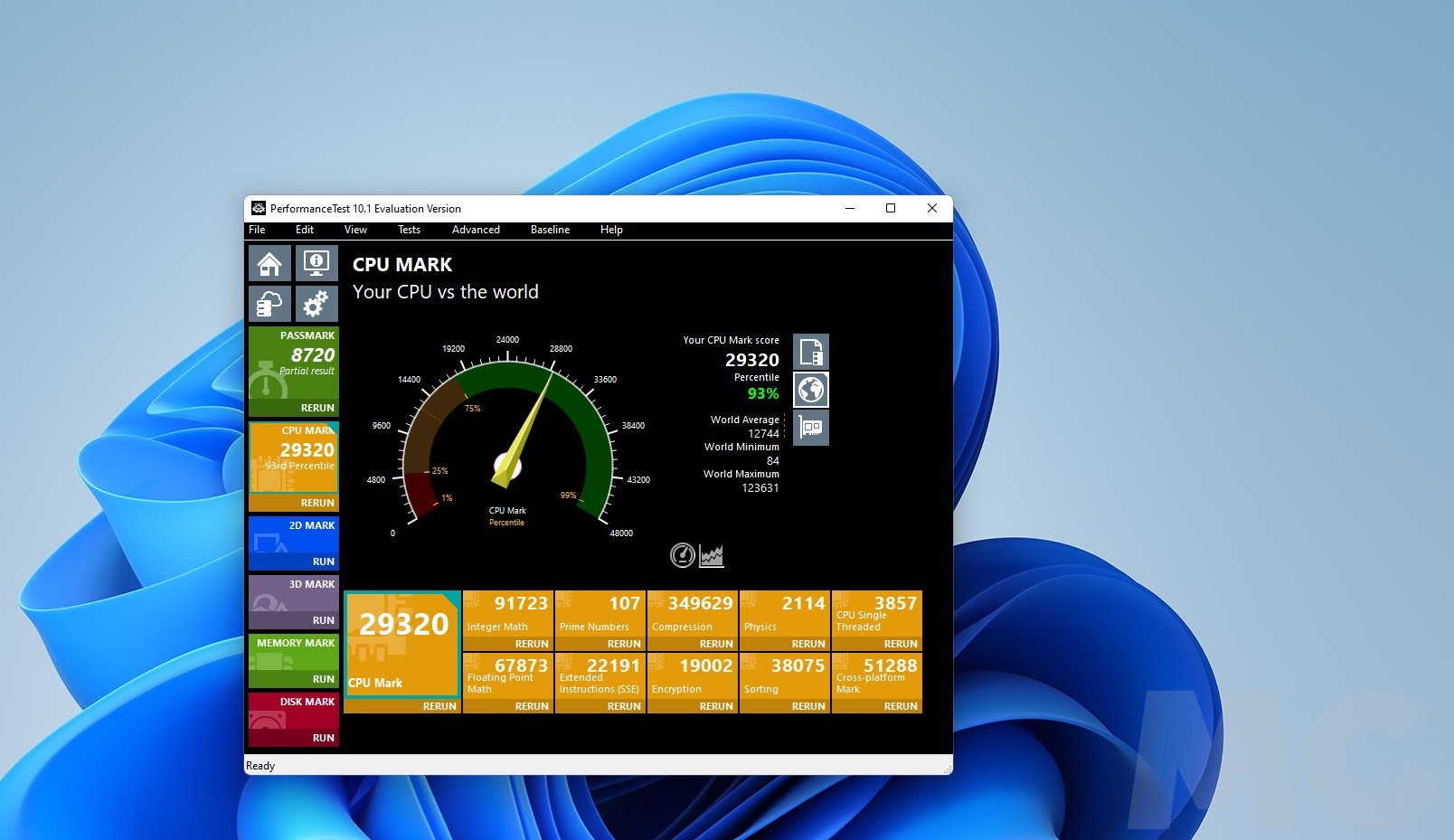
In Blender the same tonic is maintained, since the Intel Core i5-12600K once again proves that it is an extremely powerful chip, and that it can offer a performance at the height of the high-end of the previous generation. Notice that, for example, in BMW27 it is almost at the same level as an Intel Core i9-10900K that, I remind you, has a configuration of 10 cores and 20 threads . On the left you can find a list of the performance of different CPUs in this test that will serve as a reference to compare.
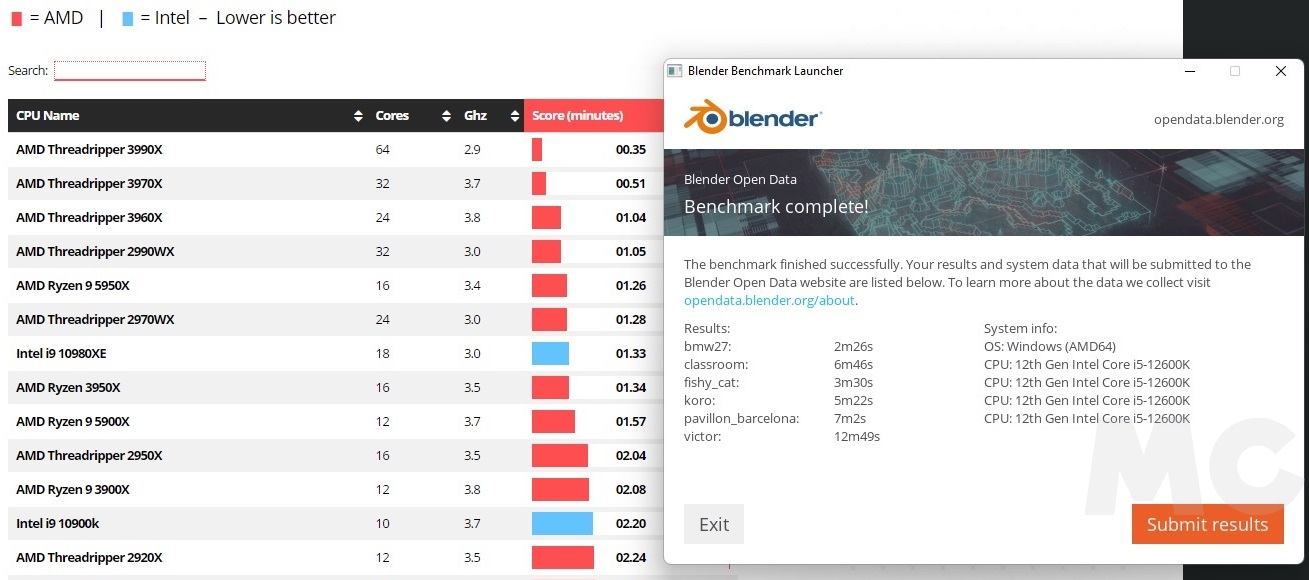
We now move on to the AIDA64 memory and caches test. We have used the same Kingston Fury kit of DDR5 at 5,200 MHz with CL40 latencies that we used with the Intel Core i9-12900K, and therefore we found very similar results. We can highlight, yes, the higher latency and the reduction of the bandwidth in the caches that the Intel Core i5-12600K shows in this test. On the other hand, the stability offered by this memory has been total , even in overclocked tests.
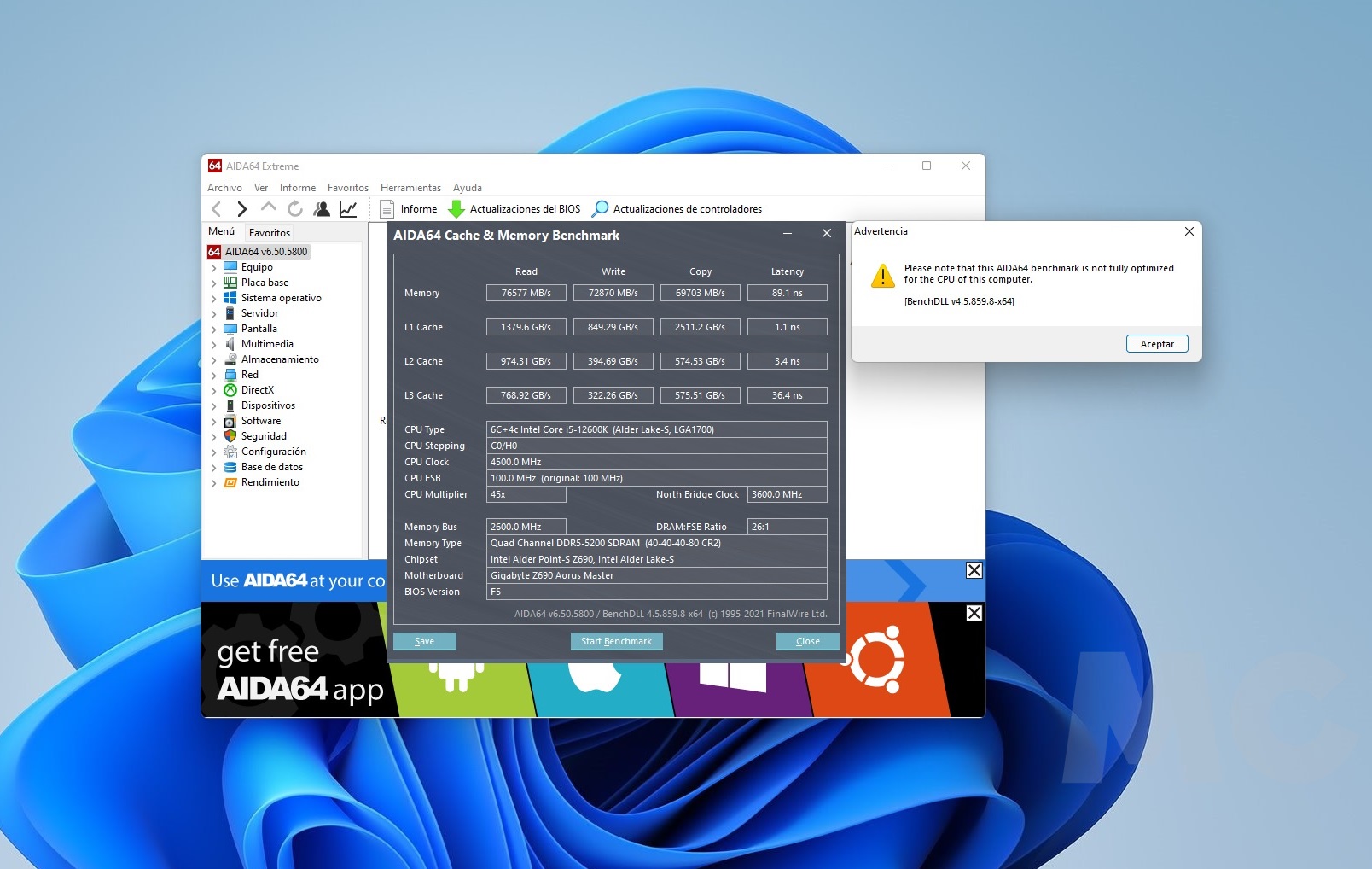
Intel Core i5-12600K Performance: Gaming
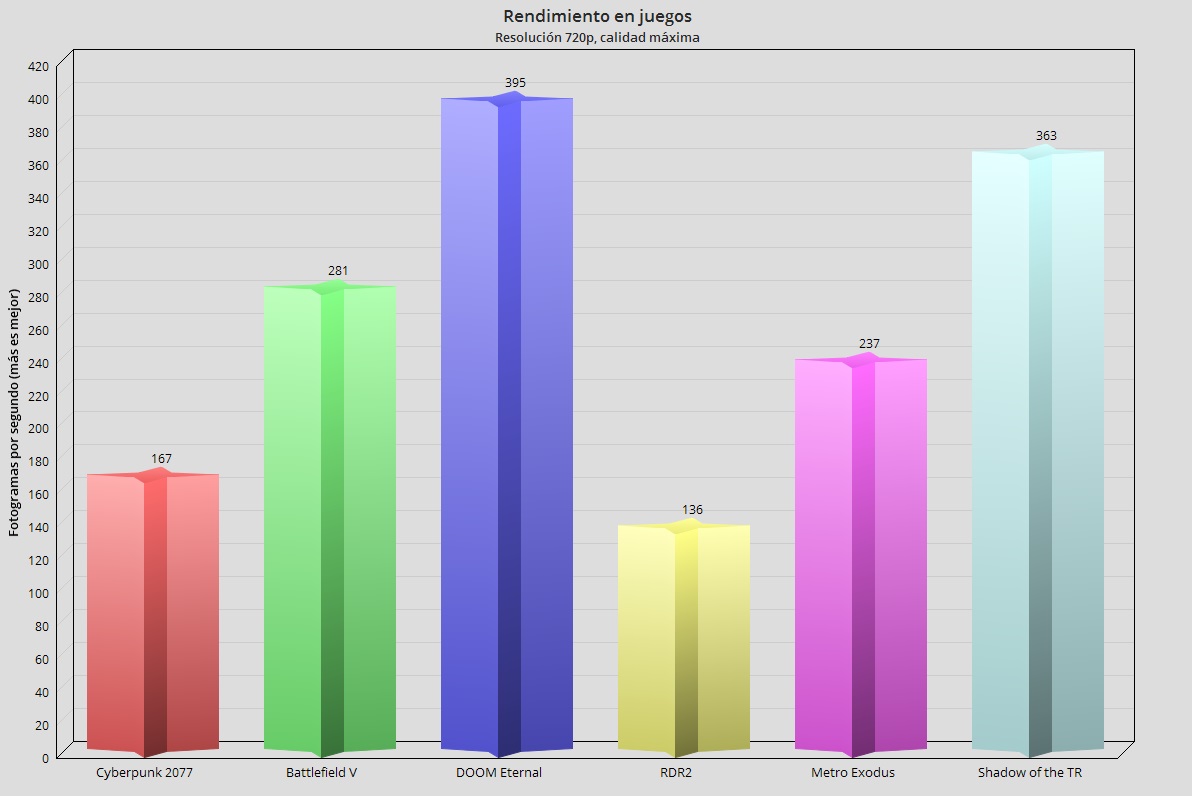
In gaming, the Intel Core i5-12600K offers fantastic performance even without overclocking. We have maintained the usual trend, that is, we have tested the games in 720p and 1080p resolution because, when we move at those levels, the bottleneck moves to the processor . This means that, in these resolutions and under the same configuration, any difference in performance will be mainly due to the greater or lesser power of the processor.
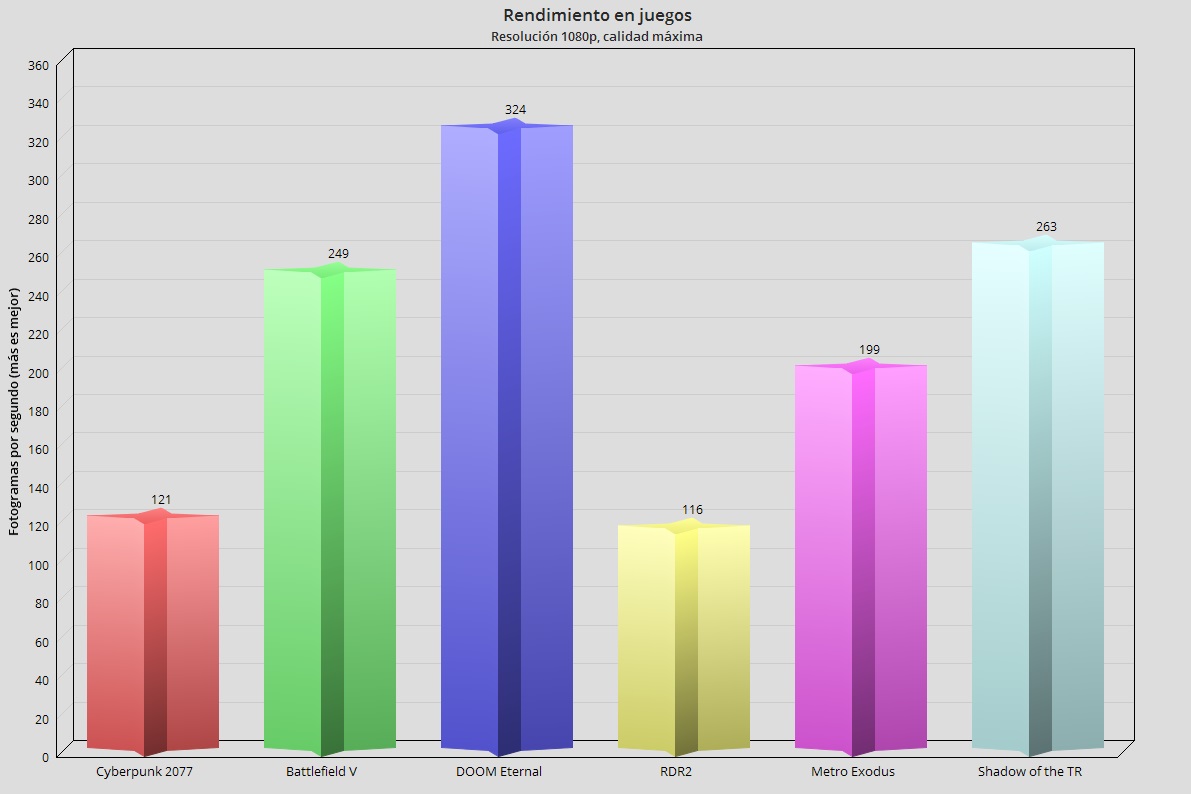
When we focus on games, we see that the Intel Core i5-12600K is only slightly less powerful than the Intel Core i9-12900K , and this translates into a very good result, since, as we said at the time, the new cap Intel’s range outperformed the Ryzen 9 5950X in games. With that difference between the two present, is the Intel Core i5-12600K capable of outperforming the Ryzen 9 5950X in games? Well yes, in fact it is curious to see how it even surpasses the Intel Core i9-12900K in some cases, and this is possible thanks to three keys:
- The high IPC of its high performance cores (Golden Cove).
- The gaming reliance on single-threaded performance when we go past a quad-core, eight-thread configuration. These do not take advantage of a configuration like the Ryzen 9 5950X, which has 16 cores and 32 threads, and that gives the Intel Core i5-12600K an advantage.
- The optimal distribution of the workload and the adaptation of the turbo mode accordingly.
On average, the Intel Core i5-12600K is roughly 4% more powerful than the Ryzen 9 5950X in gaming. Keep in mind that this difference may vary depending on the games that we use to compare the performance of both processors, but in any case it is quite an achievement for a processor that costs 310.30 euros, since it has been able to overcome another that has a price of 758.60 euros. In the previous points we have already explained why.
Intel Core i5-12600K: Consumo, overclock y temperatura
The temperatures recorded by the Intel Core i5-12600K are excellent. Running at its stock frequency, this chip stays at optimal levels even when running at full load, which means it’s workable even with inexpensive cooling solutions. However, if we want to overclock, we will need a powerful cooling solution since, as we see in the graph, the working temperature shoots up when it works at full load.
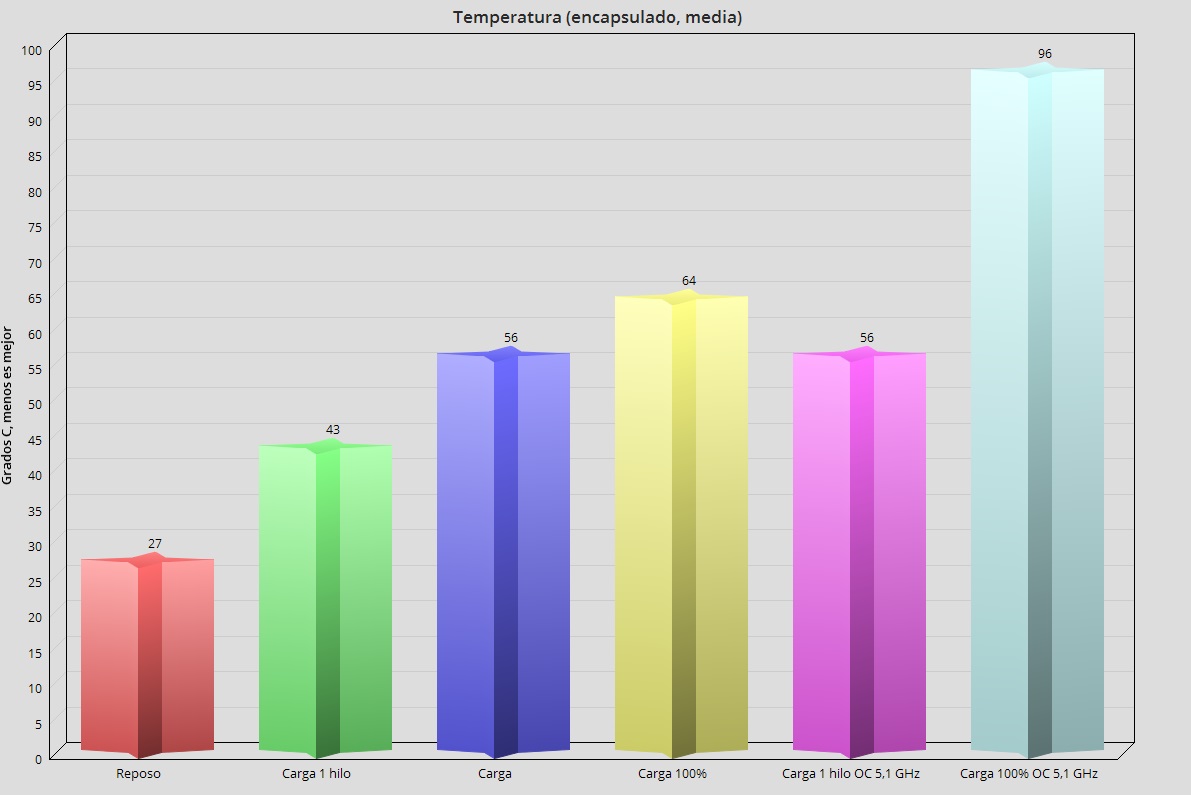
However, I want to make clear something that is evident just by looking at the graph, but that it seems that not all our readers have finished understanding. The temperatures of a processor under full load (100% use) represent the worst possible scenario , and are not representative of what happens under normal use focused on games, for example, where a processor like the Intel Core i5-12600K never it becomes so saturated. For example, there are games that do not get to put this processor or 50% of use.
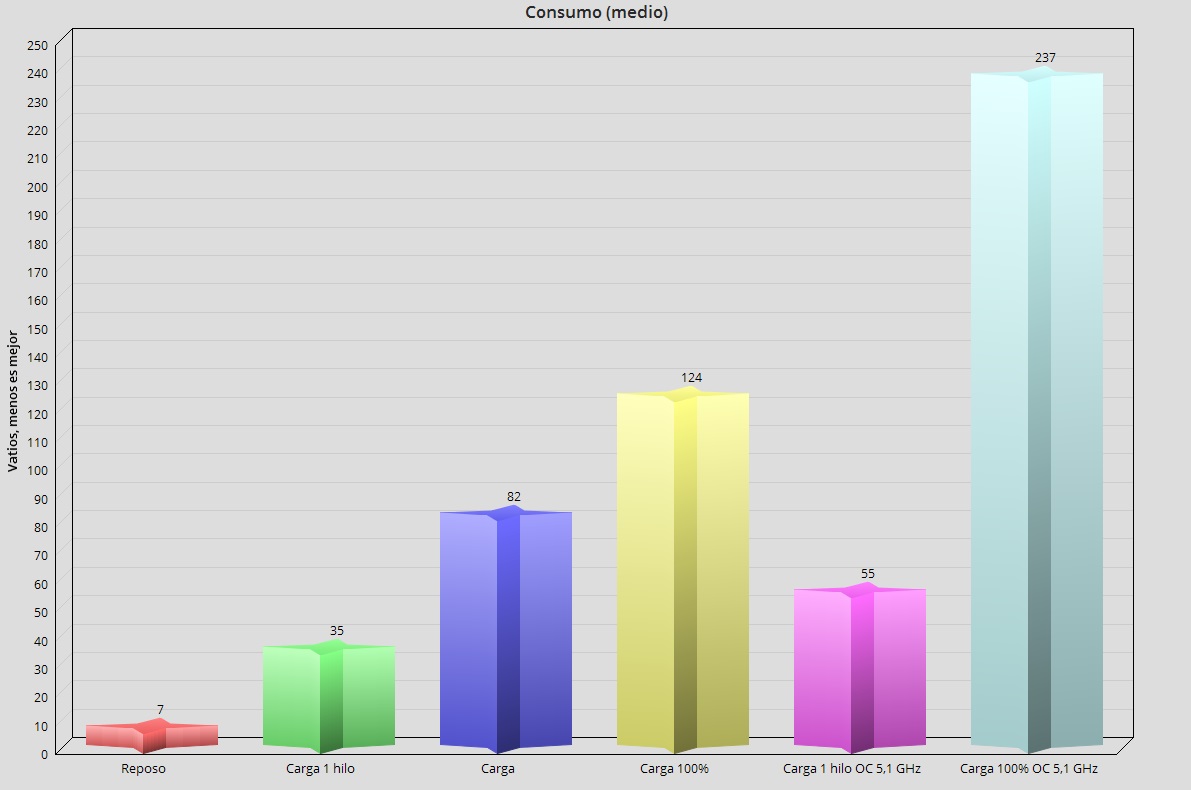
Regarding consumption, the same trend is maintained . When the Intel Core i5-12600K runs at stock frequencies, the consumption is very good, but it shoots up if we overclock. What can I say, it is normal since by overclocking the Intel Core i5-12600K we are eliminating the power limitations, with all that this entails both in terms of consumption and temperature, as we have already seen.
Overclocked CPU-Z performance.
Performance in Cinebench R23 at 5.1 GHz.
And speaking of overclocking, with the unit we have tested I have been able to go up to 5.1 GHz (high performance cores) while maintaining total stability. I was able to boot with a 5.2 GHz frequency, but it was impossible for me to complete any performance tests, so the ceiling of this unit is at that 5.1 GHz. Note that I speak of 5.1 GHz in all cores of high performance, and that this frequency is maintained with all active cores . In contrast, the turbo mode only scales to 4.9 GHz with an active core.
Final Notes: Best Gaming Processor
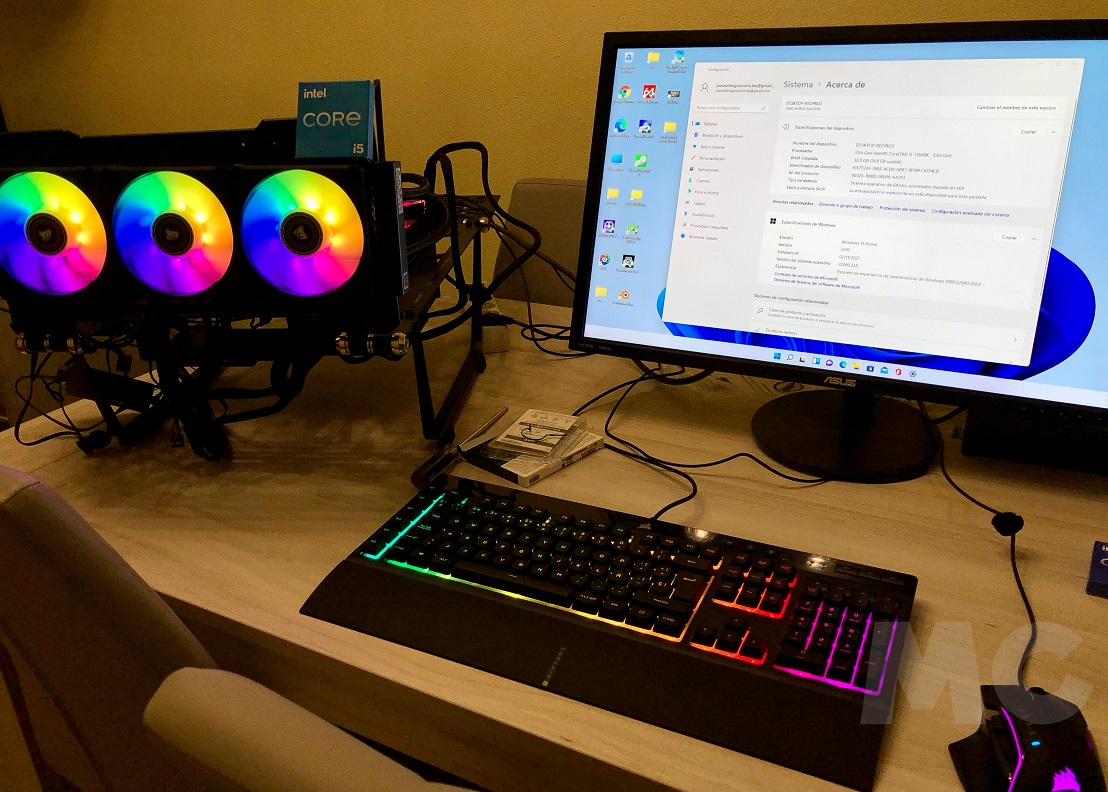
A fully deserved recognition. The Intel Core i5-12600K has proven to offer excellent gaming performance, so much so that it is capable of outperforming everything AMD has right now in the mainstream consumer market, including the Ryzen 9 5950X, a chip that, as we have seen in analysis, it costs more than double.
If we focus on the synthetic performance tests, we see that the Intel Core i5-12600K has also positioned itself at a fantastic level. This is important because it only reaffirms what we had already told you in the analysis of the Intel Core i9-12900K, that the hybrid architecture that Intel has used, with high-performance and high-efficiency cores, really works , and has been a step in the right direction.
I do not speak without reasons, the Intel Core i5-12600K surpasses , with its 6 high-performance cores, 4 high-efficiency cores and 16 threads, the Ryzen 7 5800X in all tests focused on multithreading, and that said processor has 8 High-performance 16-thread Zen 3 cores. It is also more powerful in single-wire, and yet the AMD chip costs 429 euros, that is, 119 euros more than the Intel Core i5-12600K . I think nothing more needs to be said, the story tells itself.
Nothing to object in terms of performance, the Intel Core i5-12600K is the best processor in its class, and range, if we talk about gross power, and also if we talk about price, since as we have said it surpasses both in single and multi-threaded to the Ryzen 7 5800X, even though this one is more expensive. If we go to consumption, we see that the values registered by the Intel Core i5-12600K are much more contained than those of the Intel Core i9-12900K, and that it also heats up much less.
With the Intel Core i5-12600K we will have a cooler and more efficient operation , and we will enjoy all the advantages of the new LGA 1700 platform, and of the chipset. For all that I have commented in this section, I believe that, at the time of writing the analysis, the Intel Core i5-12600K becomes the best high-performance processor in its category, and the most interesting option for price-performance value of this first wave of chips based on Alder Lake-S.
ABSTRACT
The Intel Core i5-12600K is the best processor for gaming. A fully deserved recognition, as it has shown that it offers excellent performance in games, so much so that it is capable of surpassing everything that AMD has right now in the general consumer market, including the Ryzen 9 5950X, a chip that, as we have seen in the analysis, it costs more than double. In multithreading, it easily outperforms the more expensive Ryzen 7 5800X.


